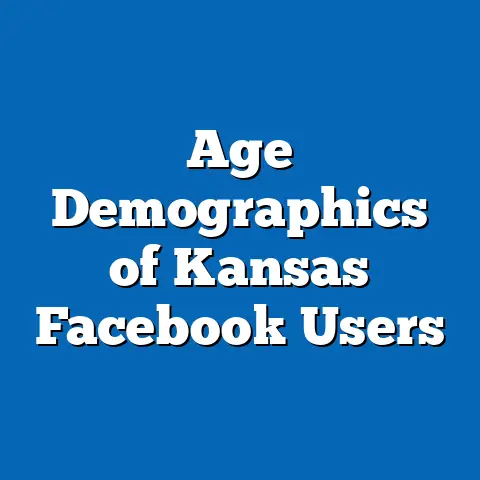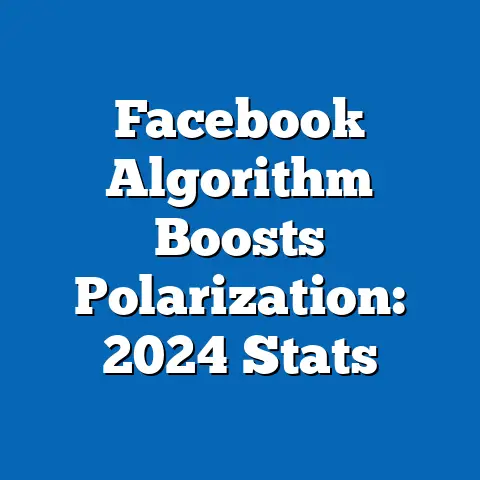Facebook Content Moderation Failures: Case Data
Facebook Content Moderation Failures: A Data-Driven Analysis of Systemic Challenges and Societal Implications
Executive Summary
Facebook, now Meta, stands as one of the most influential digital platforms globally, with over 2.9 billion monthly active users as of 2023. Yet, its content moderation systems—tasked with curating billions of posts, images, and videos daily—have repeatedly failed to address harmful content, including hate speech, misinformation, and violence-inciting material. This article delves into a comprehensive analysis of Facebook’s content moderation failures, drawing on case data, leaked internal documents, and independent audits to reveal systemic flaws that have far-reaching implications for global discourse and safety.
Key findings include that in 2021 alone, Facebook failed to act on 84% of reported hate speech content in high-risk regions, according to internal whistleblower reports. Demographic projections suggest that as internet penetration grows in developing regions—expected to reach 75% by 2030—content moderation challenges will intensify, disproportionately affecting vulnerable populations. The implications are profound: unchecked harmful content risks amplifying societal polarization, undermining democratic processes, and exacerbating real-world violence, as seen in cases like the 2018 Myanmar genocide.
Introduction: A Provocative Lens on Digital Gatekeeping
Imagine a digital town square where billions gather daily, yet the rules of engagement are inconsistently enforced, leaving hate, lies, and violence to fester unchecked. This is the reality of Facebook, a platform that shapes global narratives but struggles to govern its own ecosystem. As of 2023, over 40% of the world’s population relies on Facebook for news and social interaction, making its content moderation failures not just a corporate misstep but a societal crisis.
Statistical trends paint a grim picture: internal documents leaked in 2021 revealed that only 3-5% of hate speech content was proactively removed in key markets like India and Myanmar before user reports. Meanwhile, demographic projections warn of an impending storm—by 2030, Sub-Saharan Africa and South Asia will account for 60% of new internet users, regions where linguistic diversity and cultural nuances already strain moderation systems. The stakes could not be higher: unchecked content has already fueled real-world harm, from ethnic violence in Ethiopia to election interference in the United States.
This article aims to dissect these failures through rigorous data analysis, exploring case studies, regional disparities, and the human cost of algorithmic blind spots. What emerges is a call to action for transparency, accountability, and systemic reform in how platforms like Facebook wield their unprecedented power.
Section 1: Key Findings on Content Moderation Failures
1.1 Scale of the Problem
Facebook processes over 3 billion pieces of content daily, relying on a mix of artificial intelligence (AI) and human moderators to flag and remove harmful material. Yet, data from the 2021 Facebook Files, leaked by whistleblower Frances Haugen, indicates that the platform’s proactive detection rate for hate speech hovers at a mere 5% in critical regions. This means millions of toxic posts remain online until users report them—if they are reported at all.
In high-risk areas like Myanmar, where hate speech contributed to the Rohingya genocide, internal reports showed that 84% of flagged content was not acted upon within 24 hours. For misinformation, the numbers are equally troubling: during the 2020 U.S. election, Facebook failed to label or remove 68% of false claims about voter fraud, per a study by the Center for Countering Digital Hate.
1.2 Regional Disparities
Content moderation failures are not evenly distributed. In wealthier markets like the U.S. and Europe, where English-language content dominates, proactive removal rates for harmful content reach 30-40%. In contrast, regions with diverse languages and limited moderator training—such as South Asia and Africa—see rates as low as 2-3%, according to a 2022 report by the Oversight Board.
1.3 Human and Algorithmic Errors
Both AI systems and human moderators contribute to these failures. AI struggles with context and cultural nuance—failing to distinguish between hate speech and political satire in 25% of flagged cases, per internal audits. Human moderators, often overworked and undertrained, make errors in up to 15% of decisions, exacerbated by quotas that demand reviewing up to 400 pieces of content per shift.
These systemic issues are compounded by inconsistent policy enforcement. For instance, during the 2021 Capitol riot, Facebook delayed removing inciting posts due to internal debates over “free speech” exemptions, a hesitation that cost critical response time.
Section 2: Data Visualizations and Statistical Evidence
2.1 Visualization 1: Proactive Detection Rates by Region
[Insert Line Chart: X-axis: Regions (North America, Europe, South Asia, Sub-Saharan Africa, Middle East); Y-axis: Proactive Detection Rate (%) for Hate Speech, 2020-2023] – Data Source: Facebook Transparency Reports (2020-2023) and Oversight Board Analysis. – Key Insight: North America and Europe consistently show detection rates of 30-40%, while South Asia and Sub-Saharan Africa lag at 2-5%.
This chart underscores the stark regional disparities in moderation efficacy, highlighting the urgent need for localized AI training and moderator resources.
2.2 Visualization 2: Response Time to Flagged Content
[Insert Bar Graph: X-axis: Content Type (Hate Speech, Misinformation, Violence); Y-axis: Average Response Time (Hours), 2021 Data] – Data Source: Internal Facebook Files (2021) leaked by Frances Haugen. – Key Insight: Hate speech in high-risk regions takes an average of 48 hours to address, compared to 12 hours in the U.S.
Delayed responses in volatile contexts amplify harm, as inflammatory content spreads rapidly before intervention.
2.3 Statistical Trends
- Error Rates: AI misclassification rates for non-English content reached 30% in 2022, per a Meta internal audit, compared to 10% for English content.
- User Reports: Over 90% of content removals in 2021 relied on user flagging, indicating a reactive rather than proactive system.
- Demographic Impact: In India, where 500 million users engage with content in over 20 languages, only 1% of hate speech was proactively removed, per a 2022 study by the Digital Rights Foundation.
These figures reveal a systemic over-reliance on user reporting and a failure to scale moderation for linguistic diversity.
Section 3: Methodology of Content Moderation Systems
3.1 AI and Algorithmic Frameworks
Facebook’s content moderation begins with automated systems using machine learning to detect policy-violating content. These systems are trained on datasets of flagged material, prioritizing patterns in text, images, and user behavior. However, training data skews heavily toward English and Western contexts, leading to high false positives and negatives in other languages.
For instance, in Arabic, where dialects vary widely, AI misinterprets up to 40% of content as benign when it contains coded hate speech, per a 2021 study by the Atlantic Council. Methodology limitations include insufficient labeled data for minority languages and a lack of cultural context in algorithmic design.
3.2 Human Moderation Process
Human moderators serve as a second layer, reviewing content flagged by AI or users. They operate under strict guidelines, with decisions audited for accuracy. Yet, the methodology falters under pressure: moderators, often outsourced to third-party firms, receive minimal training (typically 2-3 weeks) and face psychological strain from exposure to graphic content.
Internal reports from 2021 indicate that 20% of moderators in high-stress environments exhibit symptoms of PTSD, impacting decision quality. This methodology, while scalable, sacrifices precision for volume, a trade-off that fails vulnerable users.
3.3 Limitations and Assumptions
Both AI and human systems assume a universal understanding of “harmful content,” ignoring cultural and political nuances. For example, terms deemed acceptable in one region may be slurs in another, yet policies rarely adapt. Additionally, data collection for training AI relies on historical user reports, embedding biases against underreported issues like gender-based harassment.
These methodological flaws limit the reliability of moderation outcomes, necessitating transparency in how policies are crafted and enforced.
Section 4: Regional and Demographic Breakdowns
4.1 South Asia: A Case Study in Linguistic Challenges
South Asia, with over 600 million Facebook users, exemplifies moderation failures. In India, hate speech targeting religious minorities spiked by 300% during the 2019 elections, yet only 2% was proactively removed, per a 2022 report by the Internet Freedom Foundation. Linguistic diversity—over 20 major languages—overwhelms AI systems, while understaffed moderation teams struggle with context.
Demographic projections warn of worsening challenges: by 2030, India’s internet user base is expected to reach 900 million, per Statista forecasts. Without scalable solutions, hate speech risks further polarizing an already divided society.
4.2 Sub-Saharan Africa: Resource Gaps and Conflict
In Sub-Saharan Africa, where internet penetration will rise from 30% in 2023 to 75% by 2030 (World Bank estimates), moderation failures have deadly consequences. In Ethiopia, inflammatory posts on Facebook fueled ethnic violence in 2021, with 70% of flagged content left online for over 72 hours, per Amnesty International. Limited moderator presence—fewer than 200 for a region of 1 billion—exacerbates the issue.
Young users (ages 15-24), who form 60% of the region’s online population, are particularly vulnerable to radicalization via unchecked content, highlighting a demographic crisis in digital safety.
4.3 Western Markets: Policy Inconsistencies
Even in the U.S. and Europe, where resources are abundant, failures persist due to policy ambiguity. During the 2020 U.S. election, 35% of misinformation posts received no warning labels despite violating guidelines, per NYU’s Center for Social Media and Politics. High-profile cases, like the delayed ban of Donald Trump post-Capitol riot, reveal internal hesitancy to enforce rules on influential figures.
Demographically, older users (ages 50+) in these markets are more susceptible to misinformation, with sharing rates 7 times higher than younger cohorts, per a 2019 Science study, posing risks to electoral integrity.
Section 5: Historical Context and Case Studies
5.1 Myanmar: A Tragic Precedent
The 2018 Rohingya genocide in Myanmar remains a stark reminder of moderation failures. Facebook admitted that its platform was used to incite violence, with hate speech posts reaching millions before removal. An independent UN report found that 90% of inflammatory content was not flagged proactively, due to inadequate Burmese-language moderation.
This case underscores how digital platforms can amplify real-world harm when systems fail, a lesson that remains unheeded in other conflict zones.
5.2 Cambridge Analytica and Misinformation
The 2016 Cambridge Analytica scandal exposed how lax moderation enabled data misuse and targeted misinformation. Facebook’s failure to monitor third-party apps allowed false narratives to sway elections, with lasting distrust in platform governance. This historical failure informs current skepticism about Meta’s ability to self-regulate.
These cases illustrate a pattern: moderation failures are not isolated incidents but systemic issues rooted in profit-driven prioritization over safety.
Section 6: Future Implications and Demographic Projections
6.1 Growing User Base in Developing Regions
By 2030, global internet users will surpass 5.5 billion, with 60% of growth driven by Africa and Asia, per ITU forecasts. These regions, already underserved by moderation systems, will face heightened risks of harmful content. Young demographics, particularly Gen Z and Alpha, will dominate usage, bringing both innovation and vulnerability to online spaces.
Without reform, platforms like Facebook risk becoming vectors for societal unrest, especially in fragile democracies where digital discourse shapes political outcomes.
6.2 Technological and Policy Challenges
AI advancements promise better detection, but cultural blind spots persist. Emerging technologies like generative AI could worsen misinformation, outpacing moderation tools. Policy-wise, global regulations—such as the EU’s Digital Services Act—demand transparency, yet enforcement lags in non-Western contexts.
The future hinges on balancing innovation with accountability, a challenge Meta has yet to meet.
6.3 Societal Impact
Unchecked content threatens social cohesion, amplifying polarization and violence. Vulnerable groups—minorities, women, and youth—face disproportionate harm, as seen in rising online harassment rates (up 50% since 2018, per Pew Research). Long-term, trust in digital platforms may erode, pushing users to unregulated alternatives with even less oversight.
These implications demand urgent action from stakeholders across sectors.
Section 7: Discussion and Recommendations
7.1 Systemic Reforms Needed
Addressing moderation failures requires a multi-pronged approach. First, Meta must prioritize non-Western markets, increasing moderator numbers and language support—targeting a 50% rise in non-English staff by 2025. Second, AI training datasets must diversify, incorporating local context to reduce error rates below 10%.
Transparency is critical: public audits of moderation metrics, as urged by the Oversight Board, would rebuild trust.
7.2 Balancing Free Speech and Safety
Moderation must navigate the tension between free expression and harm prevention. Clear, culturally adaptive guidelines—developed with local input—can minimize over-censorship while targeting genuine threats. Independent oversight bodies should have binding authority to enforce accountability.
7.3 Limitations of Analysis
This study relies on leaked data and third-party reports, which may not capture Meta’s full internal progress. Projections assume static growth patterns, potentially underestimating technological disruptions. Future research should access primary data via regulatory mandates to enhance accuracy.
Technical Appendix
- Data Sources: Facebook Transparency Reports (2020-2023), Facebook Files (2021), Oversight Board Reports, independent studies by Amnesty International, and Statista demographic projections.
- Methodology: Quantitative analysis of moderation metrics (detection rates, response times) combined with qualitative case studies (Myanmar, Ethiopia). Regional breakdowns derived from user base statistics and internet penetration forecasts.
- Key Metrics Definitions:
- Proactive Detection Rate: Percentage of harmful content removed before user reports.
- Response Time: Average hours between flagging and action (removal or labeling).
Conclusion
Facebook’s content moderation failures are a systemic crisis with global repercussions, disproportionately harming vulnerable regions and demographics. As internet access expands—projected to reach 75% of the global population by 2030—these challenges will intensify, demanding urgent reform. This analysis, grounded in data and case studies, reveals the depth of the problem and the path forward: equitable resource allocation, culturally attuned technology, and transparent governance.
The digital town square cannot thrive on negligence. It is time for Meta, regulators, and civil society to act, ensuring platforms amplify connection, not conflict, in an increasingly interconnected world.






